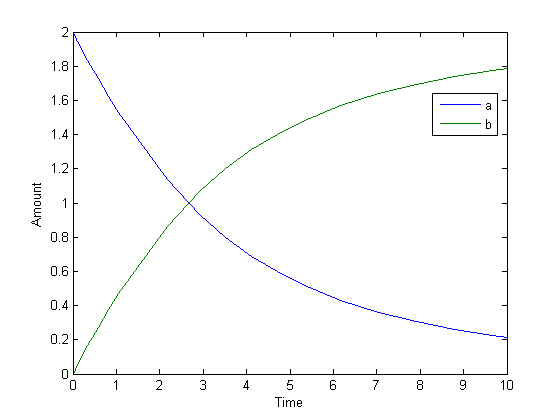SimBiology.Reaction
Object containing model reaction information
Description
The SimBiology.Reaction object represents a
reaction, which describes a transformation, transport, or binding
process that changes one or more species. Typically, the change is the amount of a
species.
When you write a reaction string, use spaces before and after species names and stoichiometric values. Some examples of reactions are as follows.
Creatine + ATP <-> ADP + phosphocreatine
glucose + 2 ADP + 2 Pi -> 2 lactic acid + 2 ATP + 2 H2O
Use dot notation to query the object properties or change properties that are not
read-only. You can also use the get and set commands.
The SimBiology Model Builder app also enables you to add reactions to your model and edit them. For an example, see Add and Configure Reactions.
Note
If you create a new reaction at the command line and do not specify its name, the
reaction gets an automatic name Reaction_N, where N is
a positive integer. N increases monotonically as you add more reactions.
If you copy a reaction using copyobj, the name of the copied
reaction is generated by appending _N, where N is the
smallest integer not in use by that prefix. For example, GivenName_1 gets
copied to GivenName_1_1.
Creation
Use addreaction (model) to create and add a
reaction to a SimBiology model.
Properties
Object Functions
addkineticlaw (reaction) | Create kinetic law object and add to reaction object |
addproduct (reaction) | Add product species object to reaction object |
addreactant (reaction) | Add species object as reactant to reaction object |
copyobj | Copy SimBiology object and its children |
delete | Delete SimBiology object |
display | Display summary of SimBiology object |
get | Get SimBiology object properties |
rename | Rename SimBiology model component and update expressions |
rmproduct (reaction) | Remove species object from reaction object products |
rmreactant (reaction) | Remove species object from reaction object reactants |
set | Set SimBiology object properties |
Examples
Version History
Introduced in R2006b
